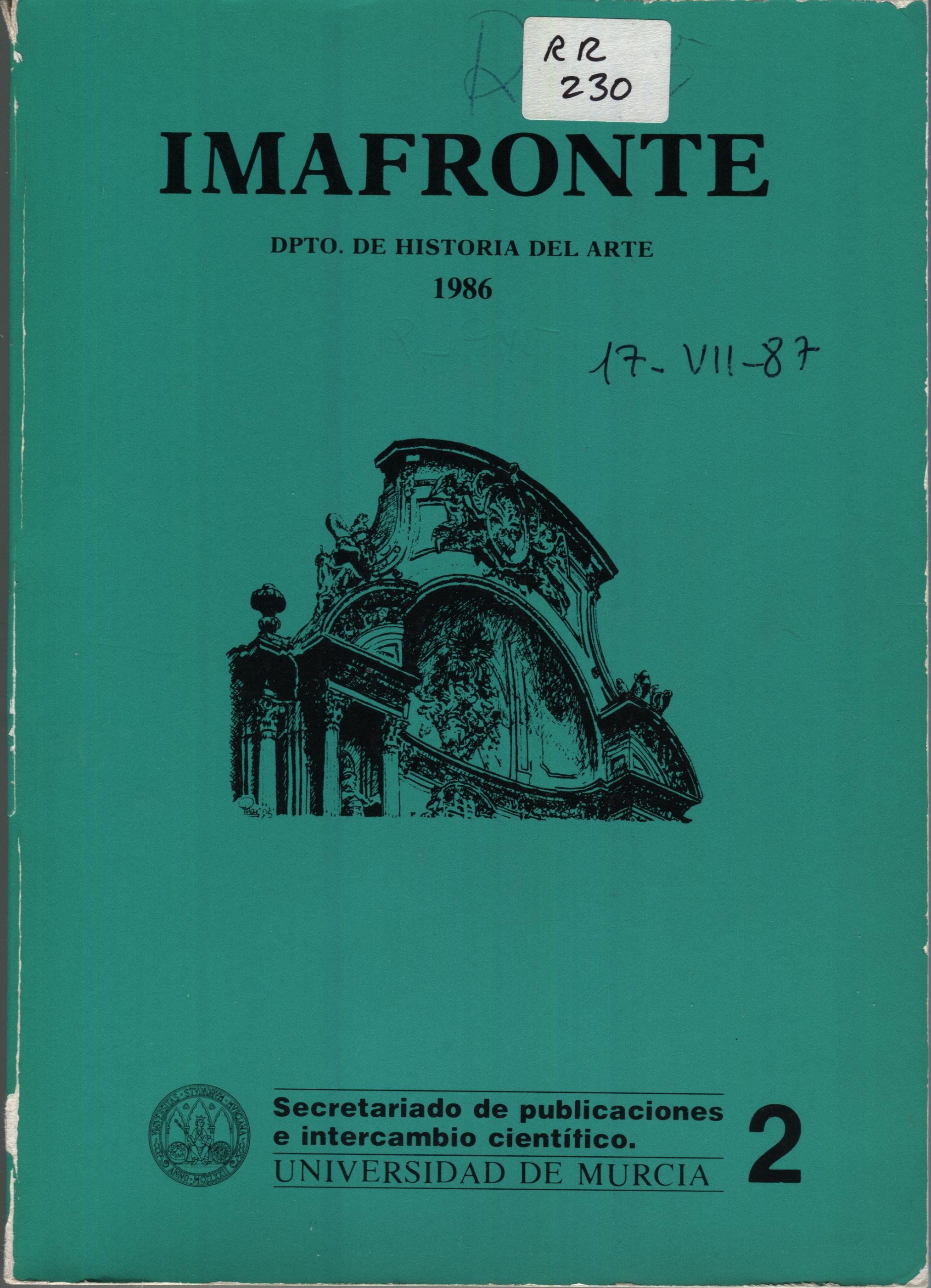EL ESCULTOR-SETABLISTA ANTONIO CASO <i>EL VIEJO</i> (1678)
Resumen
Antonio Caro, sculptor and builder of altarpieces, head of a family of artists of the same name, that reuches up to the middle of the XVIIIth century, developed his activity specilly around the middle decades of the XVIIth century. He is considered the introducer, in the southeastern area, of the systematic of the Solomonic column, decorated with vine leaves which constitute the usual element in altarpieces. This, together with cherubs' heads and the big, fleshy implementation of other elements of decoration, usually plants, which are present in his work, proved him to be an artist greatly appreciated in his time, to such an extent, that his work exceeded the limits of the diocese of Murcia and Orihuela. Although it is known from his last Will and Testament that he carried out constructions in Murcia, Elche, Orihuela. etc., we are concerned in our study more specially with his activity in Totana, Lorca and Orce (Granada). For the first time too, personal data of great interest for Antonio Caro's life and the continuation of his work, have been revealed.Descargas
-
Resumen211
-
PDF87
Las obras que se publican en esta revista están sujetas a los siguientes términos:
1. Los autores ceden de forma no exclusiva a la revista los derechos de explotación (reproducción, distribución, comunicación y transformación).
2. Las obras que se publican en esta revista están sujetas a la licencia Attribution-ShareAlike 4.0 International (CC By SA 4.0). Por lo que se pueden copiar, usar, difundir, transmitir y exponer públicamente, siempre que:
i) se cite la autoría y la fuente original de su publicación (revista, editorial y URL de la obra), permitiendo así su reconocimiento.
ii) se permite remezclar, transfromar o crear a partir del material mientras se mantenga la misma licencia del original.
3. Condiciones de auto-archivo. Se permite y se anima a los autores a difundir electrónicamente las versiones pre-print (versión antes de ser evaluada) y/o post-print (versión evaluada y aceptada para su publicación) de sus obras antes de su publicación, ya que favorece su circulación y difusión más temprana y con ello un posible aumento en su citación y alcance entre la comunidad académica. Color RoMEO: verde.
























